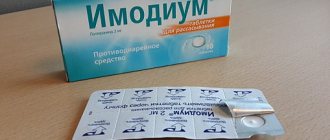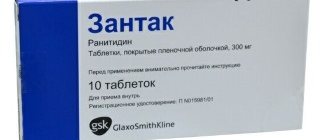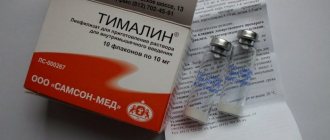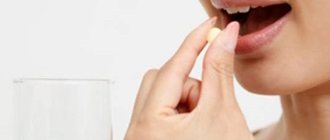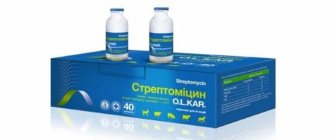Write a review
Reviews: 0
Manufacturers: Borshchagovsky Chemical and Pharmaceutical Plant, Bryntsalov-A (Russia)
Active ingredients
- Lincomycin
Disease class
- Suppurative otitis media, unspecified
- Acute lower respiratory tract respiratory infection, unspecified
- Pneumonitis caused by food and vomit
- Abscess of the lung and mediastinum
- Pyothorax
- Skin abscess, boil and carbuncle
- Phlegmon
- Local infection of skin and subcutaneous tissue, unspecified
- Pyogenic arthritis
- Osteomyelitis
- Erysipelas
- Staphylococcal infection, unspecified
- Streptococcal infection, unspecified
- Post-traumatic wound infection, not elsewhere classified
Clinical and pharmacological group
- Not indicated. See instructions
Pharmacological action
- Antibacterial
Pharmacological group
- Lincosamides
Lincomycin - price, release forms
The antibiotic lincomycin has 3 release forms (capsules, ampoules and ointment), but in any case, in pharmacies you will only find this drug from a Russian or Belarusian manufacturer. The cost of drugs is lower - indicated for 2021.
- Lincomycin capsules - each capsule contains 250 mg of the active substance “lincomycin hydrochloride”. For Lincomycin capsules, the price starts from 90 rubles (the package contains 2 blisters of 10 capsules each). If we take into account the standard regimen of use for an adult, 1 package is only enough for 3 days of use, which makes this drug even more expensive, for example, than the antibiotic Tsiprolet from the fluoroquinolone group.
- Lincomycin in ampoules - each package contains 10 ampoules of 1.0 ml. Each ampoule contains 300 mg of lincomycin hydrochloride, which in percentage terms is a 30% concentration. If we take into account the standard dosage regimen for adults, 1 package is enough for only 2.5 days of antibiotic therapy. The cost of 1 package will be from 110 rubles (at least 2 packages will be needed for a course of treatment).
- Lincomycin ointment 2% - intended for external use only, used for purulent inflammation of the skin. The ointment is available in tubes of 15 g, with an active substance concentration of 2%. The ointment is produced in Kurgan, and its cost will be from 100 rubles.
Lincomycin: drug analogues
A semisynthetic analogue of lincomycin is another antibiotic of the lincosamide group - the drug Clindamycin. It should be noted that this drug also has a fairly narrow spectrum of antimicrobial action, but its effectiveness against some types of microorganisms will be 2-10 times higher - compared to lincomycin. Another advantage of this drug is that its absorption in the intestine does not depend on food intake (lincomycin can only be taken on an empty stomach, 1 hour before meals).
The price of Clindamycin starts from 150 rubles (for a package of 16 capsules of 150 mg). Dosage regimen: 1 capsule 4 times a day, duration of administration is determined by the doctor. To summarize, the effectiveness of clindamycin will be only slightly higher, but taking the drug will be much more convenient. At the same time, the risk of developing pseudomembranous colitis when taking clindamycin will be slightly higher than when taking lincomycin (24stoma.ru).
Lincomycin: indications for use
For the antibiotic Lincomycin, the instructions for use contain information that the drug tends to accumulate predominantly in bone tissue, joints, and bronchopulmonary secretions. Taking into account the supposed tropism of lincomycin to certain tissues, it is usually prescribed for the following diseases -
- purulent otitis media,
- tonsillitis, pharyngitis,
- lung abscess, pleurisy,
- infections of joints and bone tissue,
- purulent skin infections,
- with boils and carbuncles.
An important point - when taking lincomycin, you need to take into account that if you have previously taken antibiotics from the lincosamide group, the infection may no longer be sensitive to antibiotics from this group. This is due to the fact that staphylococci very quickly develop resistance to lincomycin and clindamycin. And in fact, it is now difficult to imagine, for example, an ENT doctor who would prescribe this rather outdated antibiotic to his patient.
It makes sense to prescribe lincomycin for these diseases only if you have had a microflora culture done, which showed the sensitivity of the infectious agents to this drug. In most cases, the prescription of antibiotics is carried out without studying the microflora, and therefore broad-spectrum antibiotics are prescribed (to which lincosamides do not belong).
Indications and contraindications for use
Lincomycin solution is prescribed to adults and children. The list of indications includes:
- Osteomyelitis (purulent inflammation of bone tissue) caused by sensitive bacteria.
- Sepsis (generalized infection accompanied by bacteremia).
- Septic endocarditis (damage to the inner surface of the heart along with the valve apparatus).
- Hospital-acquired and community-acquired pneumonia (inflammation of lung tissue).
- Wound infections (tetanus, gangrene).
- Furunculosis.
- Mastitis.
- Erysipelas.
- Septic arthritis (inflammation of the joints).
- Bronchitis (inflammation of the bronchi).
- Otitis (inflammation of the hearing organ).
- Angina.
- Oral diseases. The solution is used in dentistry for gum diseases (helps with gingivitis).
- Sinusitis (inflammation of the paranasal sinuses).
- Pleural empyema (purulent inflammation of the serous membrane located on top of the lungs).
- Lung abscess (presence of purulent cavities).
In dermatological practice, ointment based on lincomycin is widely used. Contraindications to the use of Lincomycin in ampoules are:
- increased sensitivity (individual intolerance);
- period of bearing a child;
- lactation period;
- severe dysfunction of the liver and kidneys.
Lincomycin in dentistry –
The use of Lincomycin in dentistry is associated with the assertion that this antibiotic has an affinity for bone tissue, and therefore its concentration in the bone tissue of the jaws should seem to be increased.
But I only learned that this was not entirely true after working as a dentist for 10 years, and until that point we were never given the information that lincomycin is unevenly distributed throughout the bone mass. It turned out that its increased concentration is created mainly only in the bones of the small pelvis, but not in the jaws. Lincomycin used to be one of the most prescribed antibiotics in dentistry, although I am sure that it is still actively prescribed in remote regions of Russia. The usual regimen of use is 2 capsules 3 times a day (for 5-7 days). The following situations can be considered the most optimal indications for the use of this antibiotic in dentistry:
- if a tooth is removed due to purulent inflammation,
- after opening the flux on the gum (Fig. 5),
- with the development of inflammation of the socket of an extracted tooth (Fig. 6),
- to prevent complications after complex tooth extraction or tooth root resection.
Abscess on the gum and inflammation of the socket: photo
It should be noted that in case of a serious purulent infection, lincomycin, of course, should not be prescribed (otherwise it must be combined in any case, for example, with fluoroquinolones). But why do this if you can immediately prescribe an effective broad-spectrum antibiotic? In addition, this drug is ineffective for the treatment of inflammatory gum diseases, especially with the aggressive course of chronic periodontitis.
Our portal has a separate article devoted to the use of antibiotics in dentistry. For a detailed list of the most effective drugs for inflammation of teeth and gums, see the article: → Antibiotic therapy in dentistry
Lincomycin capsules - dosage regimen
Lincomycin for oral administration is available in 250 mg capsules. The regimen for use in children over 12 years of age and adults is 2 capsules 3-4 times a day. For young children, the dosage is calculated based on body weight. The duration of the appointment is determined by the doctor. The drug is prohibited for use by pregnant and lactating women.
Each dose of the drug should be taken only on an empty stomach, 1-1.5 hours before meals. This is due to the fact that when taken on an empty stomach, only about 30% of the active substance is absorbed, and when taken after a meal, only 5% of the active substance is absorbed. Those. simultaneous food intake reduces the bioavailability of the drug by 4-6 times, thereby reducing its effectiveness. Each time the drug should be taken with a full glass of water.
→ Lincomycin: official instructions for use (download in PDF)
Very important: antibiotics of the lincosamide group very often cause the development of pseudomembranous colitis. This disease manifests itself as diarrhea. This is due to the fact that while taking antibiotics of this group, conditions are created in the intestines for the development of the bacterium Clostridium difficile. If you have previously had diarrhea while taking antibiotics, or you have dysbiosis, in this case we do not recommend that you take an antibiotic such as Lincomycin.
In such cases, it is better to choose either an antibiotic from a different group, or the second option is to take lincomycin along with the tablet. Metronidazole (an antibiotic effective against Clostridium difficile). In parallel with them, it is still advisable to use drugs to normalize the composition of the intestinal microflora, for example, Acipol or similar drugs.
special instructions
If liver and kidney function are impaired, it is necessary to increase the intervals between injections and reduce the dosage by half or 1/3. In the case of long-term antibiotic therapy, systematic monitoring of kidney and liver function is mandatory through general and biochemical blood and urine tests. If a person develops colitis, the Lincomycin solution should be replaced with a vancomycin-based drug.
To old people
For elderly people, the drug is administered according to the standard regimen. The antibiotic should not be administered intravenously quickly.
During pregnancy and lactation
Lincomycin solution should not be administered during pregnancy. This is due to the fact that the antibiotic penetrates the placental barrier and can negatively affect the development of the fetus. If it is necessary to use Lincomycin during lactation, you should temporarily stop feeding your baby breast milk.
In pediatrics
The drug is contraindicated in children under 1 month of age. From 1 month to 14 years, Lincomycin can be taken orally at 30-60 mg/kg per day or administered intravenously every 8-12 hours.
Effect on reaction speed
This antibiotic does not change the speed of psychomotor reactions. It is possible to perform mental work and drive a car during treatment with Lincomycin.
Alcohol compatibility
During treatment with Lincomycin, you should not drink alcohol. The breakdown products of ethyl alcohol reduce the effectiveness of the antibiotic, negatively affect the liver and the breakdown of the drug. The likelihood of side effects also increases.
Drug interactions
There is poor compatibility of Lincomycin solution with the following medications:
- Antidiarrheals.
- Other antibiotics (protected penicillins, cephalosporins, erythromycin, chloramphenicol). While taking antibiotics of other groups, an antagonistic effect is possible.
- Peripheral muscle relaxants and anesthesia drugs. Possible respiratory arrest.
- Barbiturates.
- Theophylline.
- Heparin.
- Calcium gluconate.
- Magnesium sulfate.
- Novobiocin and kanamycin (when used in one syringe).
Lincomycin injections - instructions
Each package of Lincomycin for injection contains 10 ampoules of 1 ml. Each ampoule contains 300 mg of the active substance (lincomycin hydrochloride), which corresponds to its concentration of 30%. The drug can be used from almost one month of age, i.e. practically no age restrictions.
However, this is due not so much to the safety of the drug - but to the fact that it is used in purulent surgery mainly for the treatment of septic conditions caused by staphylococcus and streptococcus, pneumonia, purulent infections of the skin and soft tissues, i.e. in such conditions when safety for children's health is a secondary factor.
Dosage regimen for intramuscular administration - usually for adults and children over 14 years of age with intramuscular injections into the buttock, a single dose is 600 mg, i.e. You need to take 2 ampoules of the drug into the syringe at once. Usually injections are given 2 times a day (morning and evening, with an interval of 12 hours). In severe cases, injections are given 3 times a day - with intervals of 8 hours between them. For children aged 1 month to 14 years, the daily dose is calculated according to the following scheme: 10-20 mg/per 1 kg of body weight/per day.
→ Lincomycin hydrochloride in ampoules: official instructions (download in PDF)
Features of use: when administered intramuscularly, it is necessary to inject the drug deep into the soft tissues. This is necessary in order to avoid the appearance of compaction in the injection area, as well as the development of purulent soft tissue abscess. Lincomycin is administered intravenously only by drip, at a rate of approximately 60-80 drops per minute. Before intravenous administration of 2 ml of a 30% solution of Lincomycin, it must be diluted in 250 ml of isotonic sodium chloride solution.
Lyncomycin hydrochloride capsule
Instructions for medical use of the drug
Description of pharmacological action
Suppresses bacterial protein synthesis due to reversible binding to the 50S ribosomal subunit and disrupts the formation of peptide bonds. Effective against gram-positive microorganisms (Staphylococcus spp., Streptococcus spp., including Streptococcus pneumoniae, Corynebacterium diphtheriae), some anaerobic spore-forming bacteria (Clostridium spp.) and gram-negative anaerobes (Bacteroides spp., Mycoplasma spp.). Acts on microorganisms (especially Staphylococcus spp.) resistant to other antibiotics. Enterococcus spp. are not sensitive to lincomycin. (including Enterococcus faecalis), gram-negative microorganisms, fungi, viruses, protozoa. Inferior to erythromycin in activity against spore-forming anaerobes, Neisseria spp., Corynebacterium spp. Resistance develops slowly. Cross-resistance exists between lincomycin and clindamycin. In therapeutic doses it has a bacteriostatic effect, in higher doses and against highly sensitive microorganisms it has a bactericidal effect.
Indications for use
Severe infectious and inflammatory diseases caused by sensitive microorganisms (primarily staphylococci and streptococci, especially microorganisms resistant to penicillins, as well as allergies to penicillins): lower respiratory tract infections (including aspiration pneumonia, lung abscess, pleural empyema ), otitis, infections of bones and joints (acute and chronic osteomyelitis, purulent arthritis), purulent infections of the skin and soft tissues (pyoderma, furunculosis, cellulitis, erysipelas, wound infection).
Release form
capsules 250 mg; contour packaging 10 cardboard pack 2; capsules 250 mg; dark glass jar (jar) 20 cardboard pack 1; capsules 250 mg; jar (jar) 20 cardboard pack 1; capsules 250 mg; contour packaging 10 cardboard pack 1; capsules 250 mg; polypropylene jar (jar) 20 cardboard pack 1; capsules 250 mg; polypropylene jar (jar) 20; capsules 250 mg; dark glass jar (jar) 20; capsules 250 mg; plastic container 20 cardboard pack 1;
Pharmacodynamics
In therapeutic doses it acts bacteriostatically. At higher concentrations it has a bactericidal effect. Suppresses protein synthesis in microbial cells. Active primarily against gram-positive bacteria: aerobic Staphylococcus spp. (including those producing penicillinase); Streptococcus spp., incl. Streptococcus pneumoniae (except Enterococcus faecalis), Corynebacterium diphtheriae; anaerobic spore-forming bacteria Clostridium spp. Lincomycin is also active against gram-negative anaerobic bacteria: Bacteroides spp., Mycoplasma spp. Most gram-negative bacteria, fungi, viruses, and protozoa are insensitive to lincomycin. Resilience is developed slowly. Cross-resistance exists between lincomycin and clindamycin.
Pharmacokinetics
After oral administration, 30–40% is absorbed from the gastrointestinal tract. Eating slows down the rate and extent of absorption. Lincomycin is widely distributed in tissues (including bone) and body fluids. Penetrates through the placenta. Partially metabolized in the liver. T1/2 - about 5 hours. It is excreted unchanged and in the form of metabolites in urine, bile and feces.
Use during pregnancy
Lincomycin crosses the placenta and is excreted in breast milk. Use during pregnancy is contraindicated. If it is necessary to use it during lactation, the issue of stopping breastfeeding should be decided.
Contraindications for use
- hypersensitivity to lincomycin and clindamycin; - severe dysfunction of the liver and/or kidneys; - pregnancy; - lactation (breastfeeding);
Side effects
From the digestive system: nausea, vomiting, epigastric pain, diarrhea, glossitis, stomatitis; transient increase in the level of liver transaminases and bilirubin in the blood plasma; with long-term use in high doses, the development of pseudomembranous colitis is possible. From the hematopoietic system: reversible leukopenia, neutropenia, thrombocytopenia. Allergic reactions: urticaria, exfoliative dermatitis, Quincke's edema, anaphylactic shock. Effects due to chemotherapy: candidiasis. Other: decreased blood pressure, dizziness, weakness.
Directions for use and doses
Orally, 1-2 hours before meals or 2-3 hours after meals, with plenty of water 2-3 times a day with an interval of 8-12 hours. Single dose for adults - 500 mg, daily dose - 1-1.5 g Children aged 3 to 14 years orally - 30–60 mg/kg/day. The duration of treatment is determined by the doctor.
Overdose
Cases of acute overdose of the drug have not been described. With long-term use of the drug, especially in high doses, the development of candidal infection and pseudomembranous colitis is possible. If pseudomembranous colitis develops, lincomycin therapy should be discontinued.
Interactions with other drugs
When used simultaneously with penicillins, cephalosporins, chloramphenicol or erythromycin, antagonism of the antimicrobial effect is possible. When used simultaneously with inhalation anesthesia or peripherally acting muscle relaxants, an increase in neuromuscular blockade is observed, up to the development of apnea.
Special instructions for use
If liver and/or kidney function is impaired, the single dose of lincomycin should be reduced by 1/3–1/2 and the interval between doses should be increased. With long-term use of the drug, systematic monitoring of renal and liver function is necessary. If pseudomembranous colitis develops, lincomycin should be discontinued and vancomycin or bacitracin should be prescribed.
Storage conditions
List B.: In a dry place, protected from light, at room temperature.
Best before date
36 months
ATX classification:
J Antimicrobials for systemic use
J01 Antimicrobials for systemic use
J01F Macrolides and lincosamides
J01FF Lincosamides
J01FF02 Lincomycin
Lincomycin ointment - application regimen
Lincomycin-AKOS ointment is produced pharmaceutically in Kurgan (Russia). The ointment is for external use only. The tube weighs 15 g. The indication for use is purulent inflammation of the skin and soft tissues, for example: pyoderma, phlegmon, furunculosis, erysipelas.
Scheme of use - lincomycin ointment - instructions for use recommends applying a thin layer to the affected areas of the skin 2-3 times a day. If there is no improvement within the first few days of use, it can be assumed that the infection is insensitive to lincosamides. In this case, you must urgently consult a doctor to replace the drug with another antibiotic.
Composition of the drug (per 100 g) –
| Content of active substances – → content of lincomycin hydrochloride (in terms of lincomycin) – 2.0 g, which corresponds to a concentration of 2%. |
| Auxiliary ingredients – zinc oxide, solid petroleum paraffin, potato starch, medical vaseline. |
→ Lincomycin ointment: official instructions (download in PDF)
Similar drugs:
- Furacilin Solution for topical use
- Lactobacterin siccum dry (Lactobacterin siccum) Lyophilisate for the preparation of solution for oral administration
- Palin Capsule
- Bactrim Oral suspension
- Nitroxoline Oral tablets
- Pancef Oral tablets
- Nifuroxazide (Nifuroxazide) Oral tablets
- Ercefuryl Oral suspension
- Sextaphag Oral solution
- Pancef Granules for the preparation of suspension for oral administration
** The Drug Directory is intended for informational purposes only. For more complete information, please refer to the manufacturer's instructions. Do not self-medicate; Before you start using Lincomycin hydrochloride, you should consult a doctor. EUROLAB is not responsible for the consequences caused by the use of information posted on the portal. Any information on the site does not replace medical advice and cannot serve as a guarantee of the positive effect of the drug.
Are you interested in the drug Lincomycin hydrochloride? Do you want to know more detailed information or do you need a doctor's examination? Or do you need an inspection? You can make an appointment with a doctor - the Euro lab is always at your service! The best doctors will examine you, advise you, provide the necessary assistance and make a diagnosis. You can also call a doctor at home . Euro lab clinic is open for you around the clock.
** Attention! The information presented in this medication guide is intended for medical professionals and should not be used as a basis for self-medication. The description of the drug Lincomycin hydrochloride is provided for informational purposes and is not intended for prescribing treatment without the participation of a doctor. Patients need to consult a specialist!
If you are interested in any other drugs and medications, their descriptions and instructions for use, information about the composition and form of release, indications for use and side effects, methods of use, prices and reviews of drugs, or you have any other questions and suggestions - write to us, we will definitely try to help you.
Side effects and contraindications –
Lincomycin cannot be used during pregnancy, because the drug has a toxic effect on the fetus. In addition, it penetrates well through the placenta (the concentration in the fetal blood will be about 25% of the concentration in the maternal blood serum). Therefore, pregnant and lactating women should not use any form of lincomycin, including ointment.
Also, you should not take the drug if you have intestinal diseases (colitis, enteritis, ulcerative colitis), or if you have allergic reactions to lincosamides or doxorubicin. If symptoms of pseudomembranous colitis develop while taking lincomycin, it is necessary to urgently discontinue the drug and begin specific treatment, which should include taking tablets. Metronidazole or Vancomycin. We hope that our article was useful to you!
Sources:
1. Add. professional
, 2. Personal experience as a dental surgeon, periodontist, 3. American Academy of Periodontology (USA), 4. “Therapeutic dentistry. Textbook" (Borovsky E.V.).
